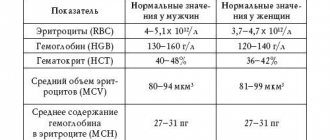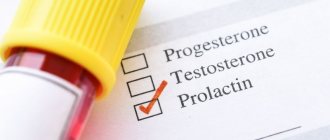How does the second stripe appear?
All pregnancy tests, regardless of manufacturer and cost, work the same.
A special reagent applied to the strip is colored only when a sufficient amount of a hormone is detected in a woman’s urine, which is a faithful companion to bearing a child - human chorionic gonadotropin, which in various medical documents is abbreviated as FSHA, GPHa, LHA, TSHA, hCG or HCG . This substance is often present in the analyzes of non-pregnant women, and even men, but in very small quantities. If a cherished event takes place and a child is conceived, HCG begins to be produced more actively. It is produced by chorion cells. Gonadotropin is necessary for the female body in order for pregnancy to develop.
Under the influence of human chorionic gonadotropin hormone, a woman’s immunity is somewhat weakened, which increases the chances of the embryo surviving. Otherwise, the mother’s strong and well-trained immunity would simply reject the baby, because he is half foreign, since he contains the father’s genetic material.
The production of hCG in a woman’s body gives the start command for the active production of progesterone, without which preserving and bearing a child will be impossible, as well as the female sex hormone estrogen, which is also extremely important during pregnancy.

The level of the hormone increases at a rapid pace, starting from the moment of implantation. Within a few hours after meeting, the fertilized egg begins its journey into the uterine cavity. She has to pass through the fallopian tube, descend into the uterine space and gain a foothold in the wall of the main reproductive female organ.
This moment is called implantation. Sometimes a woman can guess about it herself - by slight tugging sensations in the lower abdomen, smearing a drop on a panty liner. Implantation usually occurs 6-10 days after fertilization. Most often - on the eighth day.
From this moment, the chorion triggers the production of gonadotopin, and the amount of the hormone gradually increases, almost doubling every 48 hours. This does not mean that the substance can immediately be found in the woman’s blood or urine.
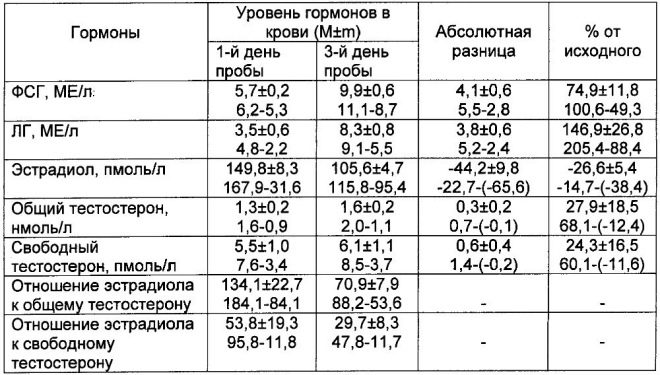
Calculate gestational age
How to decipher the result
If the blood test for hCG shows pregnancy, the results of the study should be taken to the attending physician. Laboratory assistants are not involved in decoding.
Table - Approximate values of the hormone in the blood
Table - Indicators in urine (by day)
If the indicators fully correspond to the reference values, then the fetus develops without anomalies.
Possible mistakes
Despite the high accuracy, errors may be made when collecting material that affect the final result of the study.
False positive result
Most often, a false positive result is observed in women who have been taking hormonal medications for a long time or were treated for infertility. An increased level of hCG may indicate the development of cancer (malignant and benign neoplasms of internal organs). To check the result, you can take the test again after 5-7 days.
If during this time the hormone level remains unchanged, then fertilization has not occurred. In this case, the attending physician must find the reason for the increase in indicators. If the rapid test shows a negative result, but the test result is positive, then pregnancy is most likely already developing, the hormone has just not yet been detected in the urine.
Reasons for the increased level:
- Postmenopause. During menopause, increased production of the hormone begins, so the indicators in this case are 15–20 mU/ml. The rapid test may also be positive.
- Bubble drift. During fertilization, the development of the embryo is slow, the chorion grows in the form of bubbles. In rare cases, a mole can develop into a malignant tumor.
Medicines containing human chorionic gonadotropin can increase the concentration of hCG. These include:
- Profasi.
- Gonakor.
- Horagon.
- Rotten.
After a recent miscarriage or abortion, hormone levels will not return to normal immediately.
False negative result
The reason for the delay and false negative test may be early testing. If ovulation occurred on days 20–26 of the cycle, then after taking the biomaterial, fertilization may not be confirmed. The embryo may attach to the walls of the organ late (on days 10–12), but the chorion synthesizes human chorionic gonadotropin late. Much depends on the structural features of the female body - in patients, the slow production of the hormone is caused by physiological characteristics.
With heavy drinking, the concentration of hCG in the urine may decrease. False negative results are shown by defective tests. If the analysis showed an unreliable result immediately after the delay, then there is no reason to worry. In this case, you can donate blood again after a few days.
Why track growth dynamics?
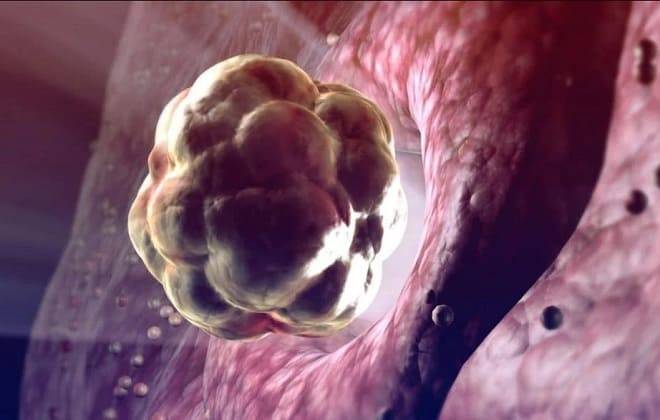
A pregnant woman regularly undergoes tests for human chorionic gonadotropin throughout the entire gestation period. The first biochemical screening is prescribed at 11-13 weeks, the second at 16-18 weeks. Why is it necessary to check your hormone levels?
By the dynamics of hCG growth, you can understand whether gestation is proceeding normally and the fetus is developing. High or low levels of the substance indicate problems with the child’s development or a threat of miscarriage.
Low hCG may indicate:
- ectopic or frozen pregnancy;
- risk of miscarriage;
- intrauterine growth retardation;
- placental insufficiency.
Elevated hormone levels indicate:
- multiple pregnancy;
- chromosomal abnormalities, for example, Down syndrome (the ratio of hCG and PAPP-A is checked);
- gestosis;
- diabetes.
There is a table that allows you to determine pregnancy at an early stage and helps doctors and women monitor the “first signs” of possible pathological conditions. But it is not a dogma.
HCG in the blood can be determined as early as 6-8 days from the expected conception.
If you count from the first day of your last period, then hCG doubles every two days until the 4th week of obstetric pregnancy. A more accurate formula: doubling occurs every 2.2 - 0.8 days. This means that 2 days is an average value. This suggests that hCG can double every 3 days or faster - every one and a half days.
After childbirth, approximately 4 weeks, hCG levels become equal to those observed in non-pregnant women.
| Term | Value (mU/ml) |
| The first two weeks from conception | From 25 from 156 |
| 3 and 4 weeks | From 101 to 4870 |
| From 7 to 11 weeks | Borders from 20900 to 291000 |
As you can see, the “scatter” is large, therefore, to make sure that everything is in order, the woman should re-take the test and contact a gynecologist for advice and decoding of the analysis. It is necessary to understand that each pregnancy is individual and hCG behaves differently in the early stages.
Anembryony is the absence of an embryo. Normally, during the development of a fertilized egg, all the cells of the embryo are divided into two parts. The cell mass from which the embryo should develop (for various reasons) stops dividing and the embryo does not form. And the group of cells from which the shell of the embryo originates continued to exist and formed the placenta.
By the second trimester, the diagnostic value of hCG decreases, as the formed placenta takes over the functions of maintaining pregnancy.
Sometimes it happens that the doctor notes a low rate of increase in hCG. Why? Growth dynamics in pregnant women cannot clearly correspond to the formula. If the hormone behaves “inappropriately,” the doctor may suspect an ectopic or non-developing pregnancy and order an ultrasound examination.
Reference values and interpretation of the obtained data
Reference values for human chorionic gonadotropin depend on gestational age. In the case when this hormone is detected in the vascular bed of a non-pregnant woman, or in men, over 5 mU/ml, this indicates the presence of pathological processes in the body.
During a normal pregnancy, a gradual increase in the level of hCG in the blood is observed. During the first 12 weeks of pregnancy, this hormone increases most rapidly. During this period, the hCG level doubles every three days. The maximum increase in beta hCG is observed at 12-13 weeks of pregnancy, when the chorion is transformed into placental tissue. This high concentration remains in the blood for two weeks. Then the level of this hormone slowly decreases to certain constant values, which remain until delivery.
How does the hormone level increase?
In women before pregnancy, the level of the hormone in the body does not exceed values in the range from 0 to 5 mU/ml. And the substance is not detected in urine at all. If conception has taken place, then for the first time the hormone level will exceed the “non-pregnant” threshold only on the second or third day after implantation. It must be said that all women produce the hormone at different rates, and therefore you should not demand mathematical accuracy from laboratory technicians.
By the way, these morally difficult days are called by ladies dreaming of motherhood with the abbreviation DPO, which means “day after ovulation.” Ovulation, of course, is also not fixed for everyone, but in the vast majority of cases it falls on the 14-15th day of the cycle - at its very middle with a menstrual cycle lasting 28 days. Thus, 2 DPO is two days after ovulation or the 17th day of the cycle, and 5 DPO is the 20th day from the start of the menstrual cycle and only the fifth day after expected ovulation.
If the second phase of the female cycle lasts 14 days, then the first day of the delay is considered to be 14 DPO or 29 days of the cycle. Many women, waiting for good news, begin testing too early and are very worried about the lack of the treasured second line. How many days after conception can you safely do a test for, it becomes clear if you know how the quantitative indicator of a hormonal substance in the blood changes.
Table of average quantitative values of HCG in the blood during pregnancy:
| Time since ovulation | Average HCG concentration | Lowest HCG value | Highest HCG value |
| 7 DPO | 4 | 2 | 10 |
| 8 DPO | 7 | 3 | 18 |
| 9 DPO | 11 | 5 | 21 |
| 10 DPO | 18 | 8 | 26 |
| 11 DPO | 28 | 11 | 45 |
| 12 DPO | 45 | 17 | 65 |
| 13 DPO | 72 | 22 | 105 |
| 14 DPO | 105 | 29 | 170 |
| 15 DPO (start of delay) | 160 | 39 | 270 |
| 16 DPO | 260 | 68 | 400 |
| 17 DPO | 410 | 120 | 580 |
| 18 DPO | 650 | 220 | 840 |
| 19 DPO | 980 | 370 | 1300 |
| 20 DPO | 1380 | 520 | 2000 |
| 21 DPO | 1960 | 750 | 3100 |
| 22 DPO | 2680 | 1050 | 4900 |
| 23 DPO | 3550 | 1400 | 6200 |
| 24 DPO | 4650 | 1830 | 7800 |
| 25 DPO | 6150 | 2400 | 9800 |
| 26 DPO | 8160 | 4200 | 15600 |
| 27 DPO | 10200 | 5400 | 19500 |
| 28 DPO (two weeks late) | 11300 | 7100 | 27300 |
Test sensitivity
The gonadotrope produced from the moment of attachment of the fertilized egg first enters the blood, and only then part of it is excreted in the urine. Therefore, at the initial stage, even before the delay occurs, only a biochemical blood test can show the “piquant situation”.
The tests, which are available at any pharmacy or store, also differ in their sensitivity, in their ability to “catch” traces of the hormone in the secreted liquid. The minimum is 30 units, the maximum is 10. Most often on pharmacy shelves you can find test strips with an average sensitivity of 20-25 mU/ml. They are able to respond with a control strip to an increase in human chorionic gonadotrope only 14-15 days after conception. That is why they are recommended to be carried out in the first days of the actual delay, so that the results are not in doubt.
Of course, it happens that the test begins to show a weak second line even earlier, but this becomes possible only in women with hCG production at the maximum level or above the average norm. There is only one conclusion from all of the above - if about as early as possible, you should go to the nearest clinic to donate blood for hCG determination.
If “time is of the essence,” then the woman should be patient, not be nervous and wait for the delay in order to conduct a simple and understandable home test, which with a high degree of probability will be able to answer the main question 2 weeks from conception.
How to donate blood for hCG?
In order to donate blood for hCG correctly and obtain objective examination results, a number of conditions must be met. It makes no difference whether a study is conducted to determine the concentration of total hCG or free b-hCG. The differences are that these two types of research are conducted for different purposes. Total hCG is examined if early diagnosis of pregnancy and its possible pathologies is necessary.
Blood test for hCG - preparation
Features of preparation for research often depend on the purpose of the analysis.
Blood testing for hCG is prescribed in the following cases:
- diagnosis of early pregnancy;
- monitoring the gestation process over time;
- prenatal diagnosis of malformations in the fetus;
- absence of menstruation;
- assessment of the results of the termination of pregnancy;
- diagnosis of certain types of tumors.
Before donating blood for hCG, in most cases, special preparation for the test is not required. Doctors recommend excluding factors that can affect the level of hCG in the blood:
- do not expose the body to physical stress;
- stop taking hormonal medications in consultation with your doctor;
- abstain from sexual intercourse three days before the examination date.
Do you donate blood for hCG on an empty stomach or not?
When receiving a referral for tests, patients often ask their doctor how to properly donate blood for hCG: on an empty stomach or not? According to experts, to obtain an objective result, the material must be taken in the morning and preferably on an empty stomach. The last meal before a blood test for hCG should occur 8 hours before the test. You can drink plain still water as a drink. Juice, coffee, tea are not allowed. In some cases, if there is an emergency, blood can be tested for hCG even after 4 hours of fasting.

Donating blood for hCG
Before taking hCG, the patient receives detailed consultation from a specialist who refers him for examination.
The doctor points out all the nuances of the analysis, especially paying attention to factors that can distort the results of laboratory tests
The procedure for collecting biological material boils down to the following:
- The patient is placed in a chair or on a chair and frees the arm up to the forearm from clothing.
- Using a disposable syringe, the nurse draws 10 ml of blood from the cubital vein.
- The sample is placed in a sterile tube and marked with a code, which is also indicated on the direction.
- The collected sample is taken to the laboratory for microscopic examination.
HCG diagnostic methods
To determine this hormone, high-quality reagents are used. The further correct tactics of doctors’ actions depend on determining its concentration. Therefore, ultra-precise research methods are used to diagnose it. Moreover, the more accurate the method, the more different factors that influence the final diagnostic result. Thus, when donating this hormone, it is necessary to comply with all conditions both at the stage of preparation and donation itself, and during laboratory testing of blood plasma.
How reliable is the analysis result?
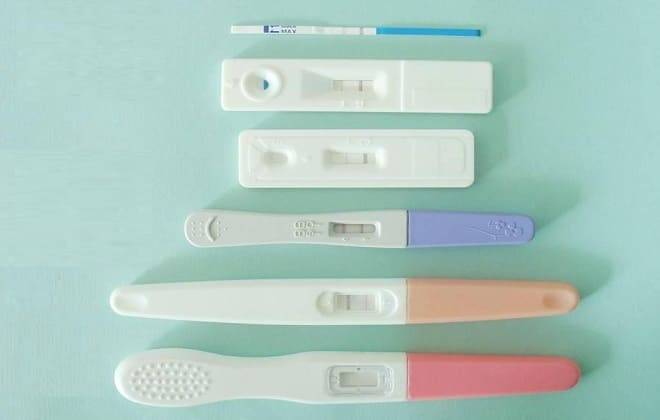
Sometimes it can happen that a study conducted to determine the level of hCG gives false results. For example, a woman may encounter a problem such as elevated hCG in the absence of pregnancy.
This may be explained by the woman having a disease such as diabetes. Some hormonal medications, especially oral contraceptives, can also give a false positive result.
Opposite situations also occur when the hCG test result is negative and the result is pregnancy. This can also happen in several cases.
First, gonadotropin deficiency will be detected if diagnosed too early. If the test is carried out earlier than 10 days after the expected conception, the indicator will still be too low. Therefore, the doctor will not be able to give an affirmative answer that the woman is pregnant.
Another reason will be an error in determining the timing. A woman can rarely determine the exact day of conception, therefore it is impossible to establish clear values for the required hCG.
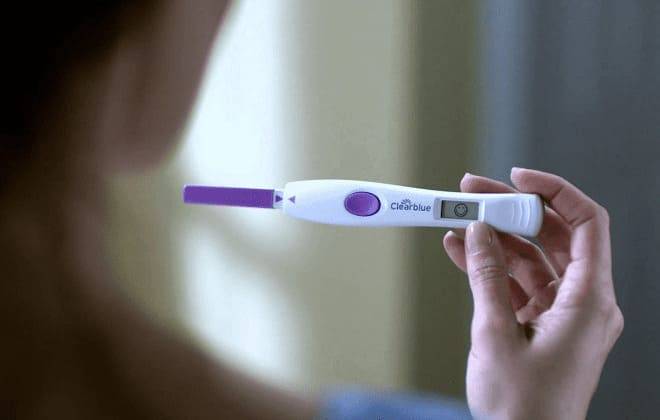
Can analysis be wrong? If the test was done incorrectly, it will give false results. Pharmacy strip strips are the most common mistake
Before checking for pregnancy at home, you need to read the instructions and pay attention to the expiration date. False negative results will occur if the test is taken too early (before the delay)
A blood test can give false positive results when the sample shows high levels of the hormone, but the woman is not pregnant. This indicates serious diseases, such as ovarian tumors, chorionic carcinoma, and hydatidiform mole. To confirm or refute the diagnosis, doctors always prescribe repeat tests.
An indicator called “human chorionic gonadotropin” (hCG) indicates that the cells of a man and a woman have united, forming an embryo that is attached to the wall of the uterus.
HCG is a hormone produced by chorionic villi. Its production depends on how successful the implantation is. If the fertilized egg is healthy, it produces a sufficient amount of hCG. The hormone consists of alpha and beta subunits. It is the beta-hCG subunit that makes it possible to determine the presence of pregnancy, its fullness, and the place of attachment of the embryo (in the uterine cavity or outside it). Dynamics are important for interpreting the results.
A woman can take an hCG test in the early stages of pregnancy herself, without a referral from a gynecologist. To do this, she needs to come to the laboratory in the morning on an empty stomach and donate blood from a vein. The results of the blood test will show the presence or absence of pregnancy.
Having received the final figures, you need to correctly decipher them. Negative result – values less than 5 units. In this case, you should relax and wait for your period. A woman cannot somehow increase or change hCG in any way - this hormone is a marker of pregnancy. Early diagnosis allows not only to establish the fact of pregnancy, but also to recognize whether it is developing correctly.
CA 242 Analysis
The study plays a supporting role; its use in combination with the CA 19-9 test and other types of examination makes it possible to detect pancreatic, rectal and colon cancer in the early stages. Also, the results of testing the level of concentration of this substance in the patient’s body suggest a relapse within a few months.
The price of tests for tumor markers and the timing of the study depend on the specific laboratory. The transcript of the SEA study should definitely be shown to the attending physician.
Standard indicators
A doctor should decipher the test results for the level of hCG in the body, since only an experienced specialist will be able to determine how much the situation corresponds to the norm. Tables of average norms for human chorionic gonadotropin levels are a fairly convenient help to determine whether a woman is pregnant, as well as to calculate the exact timing of an already formed pregnancy.
Due to the fact that determining the exact date of conception is usually very difficult, gynecologists focus on the first day of the last menstruation. In this case, we are talking about the so-called obstetric weeks of pregnancy, calculated from the moment of ovulation. However, the obstetric period is quite approximate - in fact, the development of pregnancy in the uterus begins somewhat later. The embryonic period of pregnancy differs from the obstetric period - it is always less than expected by about two weeks. This is influenced by the length of the regular monthly cycle.
You can determine the exact embryonic stage of pregnancy using hCG, because the hormone begins to be produced from the very first hours of attachment of the embryo to the wall of the uterus, and its amount indicates the day of development of the embryo. Ultrasound examination will help to definitively clarify the timing of pregnancy.
Often, an ultrasound reveals a benign neoplasm in the walls of the uterus - a fibroid.
As mentioned earlier, the spread in average hCG levels is quite large. However, some reference data still exists, but they cannot be taken as a standard:
- 2 weeks – 50-300 mIU/ml;
- 3-4 weeks – 1500-5000 mIU/ml;
- 4-5 weeks – 10,000-30,000 mIU/ml;
- 5-6 weeks – 20,000-100,000 mIU/ml;
- 6-7 weeks – 50,000-200,000 mIU/ml;
- 7-8 weeks – 100,000-200,000 mIU/ml;
- 8-9 weeks – 35,000-145,000 mIU/ml;
- 9-10 weeks – 32500-130000 mIU/ml;
- 10-11 weeks – 30,000-120,000 mIU/ml;
- 11-12 weeks – 27500-110000 mIU/ml;
- 13-14 weeks – 25,000-100,000 mIU/ml;
- 15-16 weeks – 20,000-80,000 mIU/ml;
- 17-21 weeks – 15000-60000 mIU/ml.
To determine whether pregnancy has occurred or not, women independently use rapid tests containing reagents that determine the presence of gonadotropin in the urine. If the test shows one line, the pregnancy did not take place, but if the test shows two lines, it means there is a living embryo in the uterus. Often this general analysis is resorted to at home when there is a delay in menstruation, however, such tests only help determine the fact of pregnancy, but do not inform about its correct location and development.
The level of hCG indicators is more informative. The norm is considered to be a level of hCG in the blood of a non-pregnant woman at a level of 0 to 5 MIU/ml, and pregnancy can be considered at a hCG level of 25 mIU/ml. Therefore, if the analysis yields a hCG result equal to, for example, 7 mIU/ml, the question of pregnancy remains open and requires additional tests to analyze the indicators over time, since sometimes a number of tumors or diabetes mellitus give a slight increase in the level of hCG in the human body.
If the indicator has increased several times compared to the previous level, the pregnancy is completely confirmed. In addition, taking a blood test from a vein to check the level of hCG will help an experienced doctor, based on the test results, to promptly recognize an ectopic pregnancy or frozen embryo development. Late diagnosis of such pathologies can lead to serious consequences.
HCG level during ectopic pregnancy
An ectopic pregnancy can be determined using a hormone test. This is a condition in which a fertilized egg attaches to the walls of the fallopian tube. This is dangerous for the woman; as the egg grows, severe bleeding will occur and the patient may die. The condition is immediately terminated upon detection.
In addition to hormonal analysis, ultrasound can help determine ectopic pregnancy. The doctor can see in which area of the fallopian tubes the embryo has attached.
Can the results be wrong?
At the stage of detecting pregnancy, hCG remains the most reliable method of all proposed. Despite this, there are erroneous results that are justified.
False positive result
There is no pregnancy, but hCG remains elevated? There are several versions of this:
- taking hormonal medications during the study period;
- the presence of neoplasms in the body;
- thyroid disease or other hormonal imbalances.
Repeated hCG analysis over time will help eliminate doubts.
False negative result
It also happens that the expectant mother does not know about her situation, since the level of the pregnancy hormone in her body remains low. There are several reasons why the hormone does not reach the required level:
- premature analysis, during which the fertilized egg does not yet produce the required amount of hCG;
- ectopic pregnancy. At the same time, the dynamics of the hormone will increase very slowly.
In the latter case, diagnostics are carried out every two days, and if the result remains the same, then they are urgently sent for an ultrasound.
What indicators should be normal?
Any test result must be interpreted by a doctor; only he can make conclusions about the presence or absence of pregnancy. This takes into account the woman’s age, the presence of diseases and other factors.
Thanks to ready-made tables, it is much easier to compare the results with the norm and accurately determine the gestational age. Since it is not easy to recognize the exact day of conception, obstetricians count from the last menstruation. From this moment the mature egg begins its journey. An analysis for hCG helps to accurately determine the embryonic development period, since the fetus begins to produce the hormone almost from the first days after conception. Ultrasound helps confirm these data.
Analysis for tumor markers thyroglobulin (TG)
Thyroglobulin is produced by the thyroid gland and is the main element of the thyroid colloid. TG serves as a marker for tumors that are present in the thyroid gland. AT-TG (antithyroglobulin antibodies) are antibodies to the protein - the precursor of thyroid hormones from which the thyroid gland is built.
Analysis for tumor markers of thyroglobulin is a blood test necessary in the process of monitoring cancer treatment, in the diagnosis of chronic hepatitis and cirrhosis of the liver.
Decoding the TG analysis
An increase in the concentration of thyroglobulin is possible in case of autoimmune and chronic thyroiditis, thyroid cancer and other complex diseases. A decrease in TG levels indicates tumors and degenerative processes in the thyroid gland, caused by tumors or removal of part of the gland.
<
p style=”text-align: justify;”>
CLICK TO MAKE AN APPOINTMENT, TEST OR ULTRASOUND
If you find an error, please select a piece of text and press Ctrl+Enter
Rules for preparing for research
It is necessary to take an hCG test during pregnancy several times in the same laboratory. The test must be done within the time frame specified by the doctor. Preparatory activities for pregnant and planning women are approximately the same. To find out the level of hCG before a missed period, before taking the test, the woman on the eve of the test should refrain from intimacy and visiting the bathhouse. To donate blood for hCG, you must:
- 2 days before the expected analysis, refrain from physical overexertion and get a good night's sleep;
- exclude unhealthy foods from the diet (fatty, salty, spicy, sour and smoked);
- completely give up alcoholic beverages and tobacco products. You should not eat food the day before the test. You can drink still mineral water. You can consume no more than 1.5 liters per day. liquids.
How to get tested
The test must be taken on an empty stomach. If you prepare correctly, the hCG analysis will show a reliable result. Blood is donated from a vein. An increase in the concentration of the hormone is also observed in the urine. Taking biomaterial is considered the most reliable way to determine the timing of pregnancy. There is no need to take a general blood test.
Blood collection
HCG in the blood begins to increase immediately after fertilization. A woman does not always experience a delay, which is considered the first sign of pregnancy. If the patient’s temperature rises due to a cold before the test, the test should be postponed for several days.
You can take hCG on any weekday early in the morning. The procedure takes place in several stages:
- the woman is seated on the couch, the laboratory assistant questions the patient and enters the obtained data into a registration journal or computer database;
- the patient should be as relaxed as possible;
- A tourniquet made of rubber or dense material is fixed just above the elbow bend;
- to ensure blood flow, the patient must clench and unclench her fist several times;
- The injection site is wiped with cotton wool soaked in alcohol;
- a needle tilted at an angle of 50° is carefully inserted into the vein, the required amount of biomaterial is collected and the tourniquet is loosened;
- The needle is removed and an alcohol pad is applied to the puncture site. After the procedure, the woman must bend her arm at the elbow so that the clot forms as quickly as possible. The tube with venous blood is labeled.
Analysis of urine
To collect urine, you need a disposable plastic container, which can be purchased at a pharmacy. A rapid increase in the hormone in the blood is observed a week after ovulation; the increase in urine levels is slower. As a result: the biomaterial must be submitted 9–10 days after the delay.
The test can be done independently, at home. To do this, you need to purchase an express test at the pharmacy in advance and dip the strip in your urine. To determine the level of hCG in a laboratory method, the morning portion of the biomaterial is collected in a plastic container, closed with a lid and taken to the clinic. You must write your name on the container in advance.
What it is?
HCG or hCG is a hormone that begins to be produced in the body by cells of an embryological structure such as the chorion. This happens after the fertilized egg is implanted.
Once the egg is implanted, the chorionic tissue begins to produce doses of HCG. The hormone is necessary to ensure that all conditions are created in the female body for the development of an attached embryo. The hormone suppresses processes that are normal for changing phases of the menstrual cycle, because there is no need for them for the next nine months. In addition, under the influence of this protein hormone, the corpus luteum begins to produce huge amounts of progesterone, androgens and estrogen. These substances help maintain and successfully endure pregnancy. Chorionic gonadotropin hormone causes changes in the functioning of the adrenal cortex, which leads to the physiological immunosuppression necessary in this case.
If a woman’s immunity is not suppressed, then it can reject an embryo that is 50% foreign in genetic makeup. It is hCG that provides some reduction in immune reactions, aimed at preserving the child. Later, when the placenta is formed, this hormone promotes its development and improves the permeability of placental blood vessels. In women outside pregnancy and men, such a hormone may appear in the blood during certain tumor processes in the body, and these tumors are most likely to be malignant.
By the way, pregnancy test strips so beloved by women and girls, which can be bought at any pharmacy and in any store, are based on the ability of a pregnant female body to produce this hormone, which is also called the “pregnancy hormone”. However, it should be understood that the test is designed to determine the hormone in the urine, and in it it appears in the required quantity much later than in the blood. Therefore, a blood test can give a reliable result earlier than a pharmacy pregnancy test.
What fetal anomalies cause changes in the level of hCG in the blood?
There are the following diseases, the presence of which leads to changes in hormonal levels:
- Down syndrome - diagnosis is confirmed using data obtained from ultrasound;
- Turner syndrome (chorionic hormone is normal, but other markers are reduced);
- malformations of the nervous and cardiovascular systems;
- Patau syndrome (hCG rises, other markers decrease).
It is impossible to cure these diseases. After the birth of the child, the doctor monitors the health status with symptomatic therapy.

